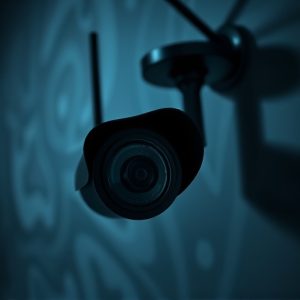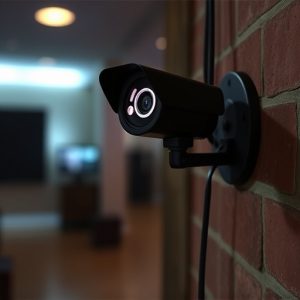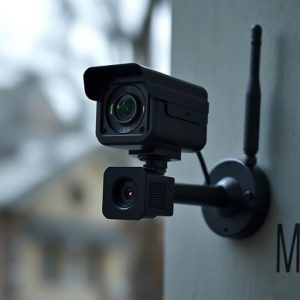Unveiling Hidden Spy Cameras: Wireless Technology & Ethical Implications
Hidden spy cameras with wireless surveillance technology offer enhanced security by transmitting hig…….
Hidden spy cameras with wireless surveillance technology offer enhanced security by transmitting high-definition video and audio feeds remotely via Wi-Fi, Bluetooth, or cellular networks. With versatile designs and discreet placement options, these devices are ideal for personal and business security, but their unauthorized use carries legal and ethical risks. To choose the best hidden spy camera wireless, consider features like high resolution, night vision, motion detection, two-way audio, and weather resistance.
Hidden spy cameras, equipped with advanced wireless technology, have transformed surveillance into a discreet art. This article delves into the intricate world of these devices, exploring their various types and applications. From home security to professional monitoring, hidden wireless cameras offer unprecedented advantages. However, they also raise legal and ethical questions. We’ll guide you through the key features to consider when choosing a hidden spy camera, ensuring an informed decision in this rapidly evolving landscape.
Understanding Hidden Spy Cameras: Wireless Technology
Hidden spy cameras, also known as wireless surveillance devices, have transformed the way we think about security and privacy. These innovative gadgets leverage advanced wireless technology to transmit video feeds wirelessly, eliminating the need for complex cable networks. This makes them highly versatile, capable of being installed in virtually any location without drawing attention. Whether it’s a hidden camera in a office, home, or public space, their wireless capabilities ensure discreet monitoring and real-time access to video data from anywhere with an internet connection.
The heart of these devices lies in their wireless communication protocols, which enable seamless transmission of high-definition video and audio signals. Technologies like Wi-Fi, Bluetooth, and cellular networks empower these hidden cameras to operate remotely, allowing users to monitor activities without being physically present. This wireless approach not only simplifies setup but also enhances accessibility, providing peace of mind and powerful security solutions for individuals and businesses alike.
Types of Hidden Wireless Cameras and Their Applications
Hidden spy cameras, also known as wireless surveillance cameras, come in various types, each designed for specific applications and levels of discretion. One common type is the miniature camera, which is almost invisible to the naked eye, making it ideal for covert operations or placement in tight spaces. These tiny cameras often resemble everyday objects like pens, keys, or even smoke detectors, allowing them to blend seamlessly into their surroundings.
Another popular choice is the wireless security camera designed to look like a regular home appliance, such as a light bulb or a power outlet. These hidden cameras transmit video and audio wirelessly to a monitor or smartphone, offering remote access for continuous surveillance. They are widely used in homes, businesses, and public spaces for security purposes, ensuring peace of mind and deterring potential intruders.
Advantages and Disadvantages of Using Hidden Spy Cameras
Using a hidden spy camera wireless offers several advantages that make it an appealing choice for security and surveillance purposes. For one, its discreet nature allows for unobtrusive monitoring, making it ideal for situations where visibility should be minimal to avoid alerting potential subjects. This stealth capability is particularly useful in environments like homes, offices, or even during undercover operations, ensuring evidence is captured without raising suspicions. Additionally, wireless technology provides flexibility in installation and remote access, allowing users to monitor feeds from anywhere with an internet connection.
However, there are also disadvantages to consider. Hidden spy cameras, despite their advanced capabilities, may face connectivity issues due to signal interference or range limitations, especially in large or obstructed spaces. Privacy concerns are another critical factor; improper use can lead to severe legal repercussions, as the recording and transmission of video footage without consent are illegal in many jurisdictions. Furthermore, these devices require regular maintenance and battery replacements, ensuring they remain operational and hidden simultaneously.
Legal Considerations and Ethical Implications
The use of hidden wireless spy cameras raises significant legal and ethical concerns. In many jurisdictions, installation and use of such devices are strictly regulated to protect privacy rights. Unauthorized surveillance through hidden cameras is often considered a criminal offense, with penalties varying based on local laws and the extent of invasion. Additionally, civil lawsuits can be filed by individuals whose privacy has been violated, leading to substantial financial damages.
From an ethical standpoint, use of hidden wireless spy cameras undermines trust and fosters a culture of suspicion. They can infringe upon personal space and privacy, leading to feelings of insecurity and anxiety among those being monitored. Moreover, their prevalence raises questions about consent and the right to private life in both public and domestic settings. It’s crucial for users to be aware of laws and ethical guidelines governing hidden camera usage to avoid legal repercussions and maintain a harmonious society.
Choosing the Right Hidden Wireless Camera: Key Features to Consider
When selecting a hidden wireless camera, understanding its key features is essential for ensuring it meets your surveillance needs discreetly and effectively. Look for cameras with high-resolution video capabilities; modern devices offer 1080p or even higher definitions, providing crisp and clear images. Night vision is another critical feature; infrared LEDs ensure the camera can capture footage in low-light conditions, making it suitable for any time of day or night.
Wireless connectivity is the cornerstone of these cameras’ appeal; they transmit video data over Wi-Fi, allowing remote access via a smartphone app or web browser. Some models offer additional features like motion detection and two-way audio, enhancing their versatility. Waterproofing and weather resistance are beneficial for outdoor installations, while compact designs ensure they can be discreetly placed in various environments, making them ideal for home security, pet monitoring, or even professional surveillance.


